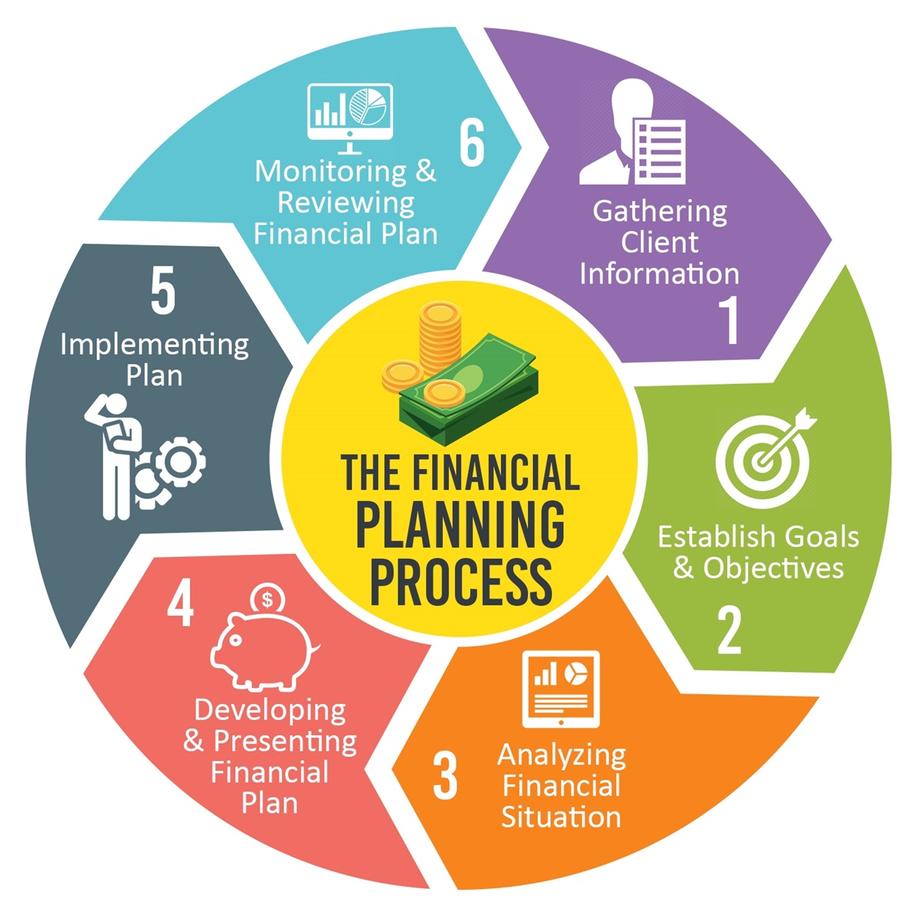The Process of Working With a CFP® Professional
Your CFP® professional knows that the first step in a financial planning engagement is to do a thorough review to assess where you stand and then work with you to develop your goals. From there, your CFP® professional can help you make a plan designed to reach your goals, guide you through it and then review your progress over time. Not every relationship is the same, and your plan may evolve as your life changes, but this is the process that a CFP® professional has been trained to follow.
 Your First Meeting
Your First Meeting
At your first meeting, you’ll usually discuss the financial planning process, what you would like to accomplish and how your CFP® professional can help you. Your financial planner knows that the first step is to discuss the services that he or she will provide you, give you information on his or her background, detail how you will pay for products and services, detail how they will be compensated, and disclose any conflicts of interest.
Click each step to learn more ➤
Once you agree to the scope of the financial planning engagement, including any conflicts of interest, the next step is for your CFP® professional to begin providing financial planning. Their first job is to gather information about your current finances and overall personal circumstances. You might discuss issues such as your risk tolerance and your exposure to longevity, economic, liability and health-care risks. This is the time for your financial planner to get to know all about you.
Now that your financial planner knows your situation, it’s time to set your goals. Your CFP® professional knows that it’s important for you both to be on the same page and to talk through any assumptions or estimates. You’ll be able to share what’s most important to you.
Your CFP® professional will want to analyze the strengths and vulnerabilities of your current financial situation and course of action and potential alternative courses of action. Depending upon your personal circumstances, this includes your cash flow, asset protection, retirement planning, emergency fund and other financial data. You want to know if you are on track or if you need to make some adjustments.
The next step is for your CFP® professional to develop recommendations to help you meet your goals. Your CFP® professional knows to consider the available options to determine what is right for you. This usually involves financial modeling with reasonable assumptions for life expectancy, tax rates and investment returns. A CFP® professional’s responsibility is to develop recommendations that are designed to maximize the potential for you to reach your goals. This isn’t just finances: it’s your life, your health, and even planning for future generations.
PLANNER PRESENTS RECOMMENDATIONS
When your CFP® professional presents the financial planning recommendations to you, you will have the opportunity to provide feedback, ask questions and discuss adjustments to the plan, as you and your CFP® professional work together to finalize the steps you will take toward reaching your goals. It’s important for you to know the reasons for the recommendations, what assumptions and estimates your financial planner made, and when you will need to take action to implement your plan.
Now it is time to put the plan into action. If your planning agreement includes implementation, then you will need to know what your financial planner will be doing and what you will be doing. For the areas that your financial planner is handling, your financial planner needs to identify potential actions, products and services, and then make recommendations. You’ll have the opportunity to talk to your CFP® professional about the recommendations before you make your selections.
Financial planning is a collaborative process. If your planning agreement includes monitoring, then you will need to work with your CFP® professional to review the performance and progress of the plan through time. Part of this is knowing what your financial planner is responsible for doing and what you need to do. It’s your job to let your financial planner know about changes in your personal circumstances (such as a change in employment or family status) that may call for adjustments to your plan. Your planner’s job is to keep track of the progress you are making to achieve your goals and determine whether any changes or updates are needed. Throughout the process, your CFP® professional is able to provide ongoing support, guidance and education.
Let's Get Started

 Your First Meeting
Your First Meeting